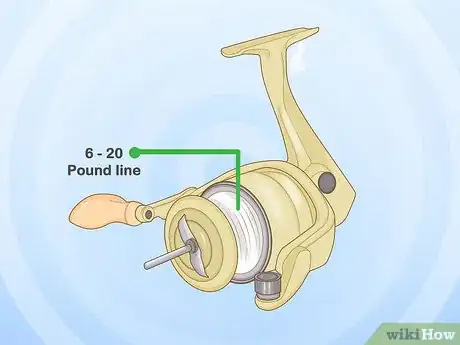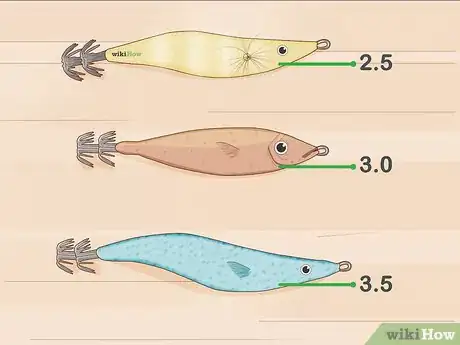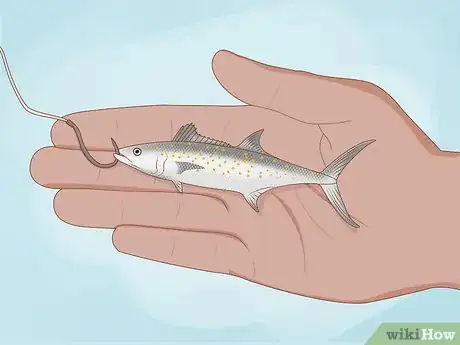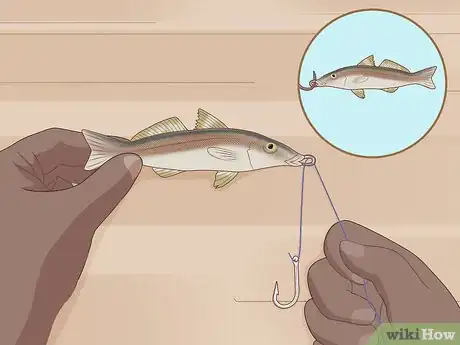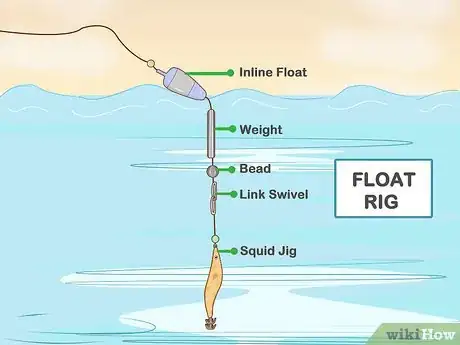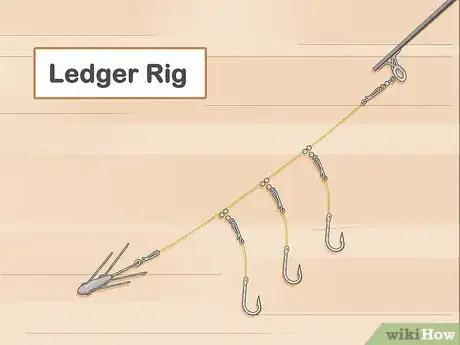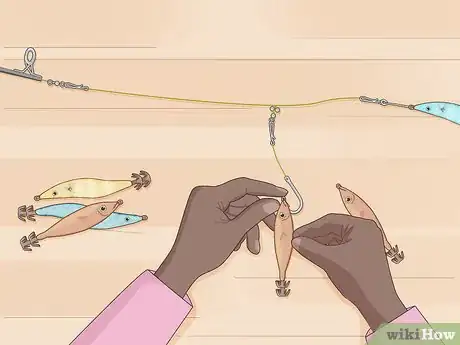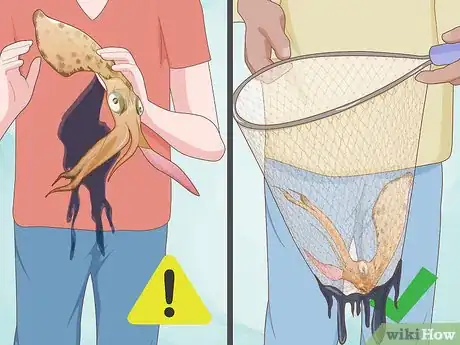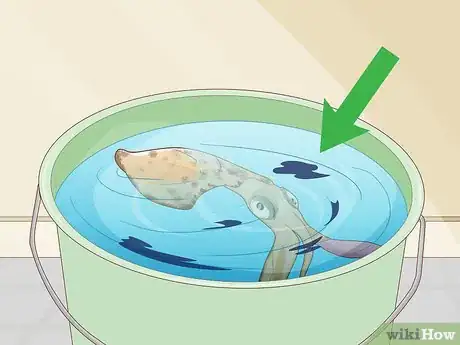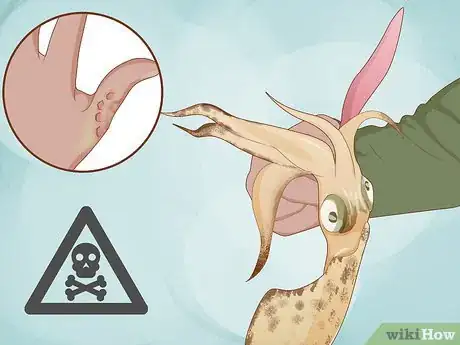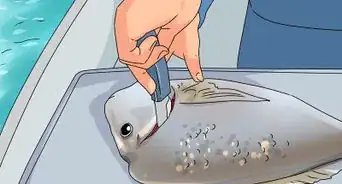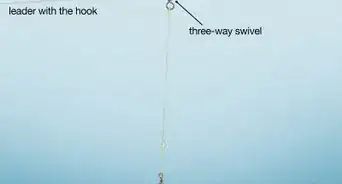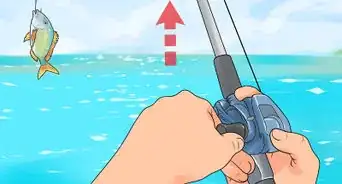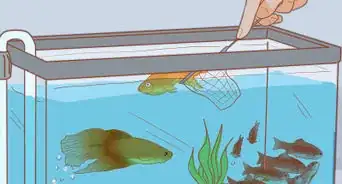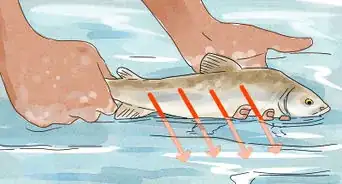This article was co-authored by Michael Reynolds. Michael Reynolds is a Professional Fishing Instructor and the Owner of Long Beach, California Fishing Lessons by Michael Reynolds. In his over 40 years of fishing experience, Michael has become very knowledgeable about the variety of fishing methods and techniques. He is passionate about sharing his knowledge with beginners to experienced anglers. Michael has been guiding and teaching fishing for over five years and is licensed and bonded with the Department of Fish and Wildlife (DFW).
There are 12 references cited in this article, which can be found at the bottom of the page.
wikiHow marks an article as reader-approved once it receives enough positive feedback. In this case, 89% of readers who voted found the article helpful, earning it our reader-approved status.
This article has been viewed 151,816 times.
Fishing is a fun way to get outside and interact with nature, and squid fishing can be a real joy for novice and experienced fishermen alike. It can present a challenge, though, as squid like to hide out in grassy areas and also squirt ink when they feel threatened. But by finding the proper gear, choosing the right time and place, and learning a few expert tips to perfect your technique, you’ll be catching loads of squid in no time.
Steps
Finding the Right Gear
-
1Choose a light, long fishing reel. Because you want to feel even the slightest changes while you’re fishing for squid, choose a light, long rod. You can use anything from a six to 20-pound line, but the lighter, the better.[1]
- You really don’t have to invest in special equipment -- almost any type of rod and reel will work for squid fishing.
-
2Try a squid jig for bait. Squids have special eating techniques, which means they need special bait, too. A squid jig is the most popular type of bait. It has a body that looks like a fish, is illuminated to catch their attention, and has one or two rows of sharp points that allow them to be reeled in when they bite.[2]
- All types of squid jigs will catch fish, and on some days certain colors will do better than others. It’s best to have a variety of sizes and colors to test until you find one that works.[3]
- Popular sizes for squid jigs are 2.5, 3.0, and 3.5. The number indicates how quickly they will drop through the water per second.
Advertisement -
3Use live bait. Less common than a squid jig but also successful is live bait. If you’d rather not invest in a squid jig or just prefer live swimmers, fish for squid using smaller squid, or with other common bait fish, like minnows.[4]
Choosing the Right Time and Place
-
1
-
2Go at high tide. Fish like to be in deeper water, where they feel more protected. That means if there’s a high tide, your chances of catching a lot of squid are even higher. Look at the calendar to find out when the tide is in and prepare to catch scores of squid!
- Chances are even better at high tide on a cloudy or rainy evening.
- Try to fish for squid when there's a full moon if you can.[7]
-
3Fish in the spring or summer. You are most likely to catch a lot of squid when it’s warm, so spring and summer to even early autumn are ideal times to go in most parts of the world.[8]
- Check online to find out the specifics for squid fishing in your area.
-
4Find a jetty or pier. You don’t need a boat to fish for squid. Squid like to hide from predators in weeds, and the combination of grass and light at an illuminated jetty or pier makes it the perfect location for squid fishing.[9]
- Seeing ink spots on decks or jetties is a big clue that squid have recently been caught there recently.
- Stay away from places where boats or other fishermen are already hanging out.
- You can also search online to find popular locations in your area for catching squid.
-
5Fish from a boat. If there’s no jetty nearby or if you simply prefer to be out on a boat, you can still have a lot of luck. Place lights on the bottom or sides of your boat or canoe. Or if you have a larger boat, you can use an underwater light, sinking it to the bottom and then bringing it back up to attract the fish.[10]
- Choose a location over a weedy and sandy bottom.
Perfecting Your Technique
-
1Go egging. Tie your squid jig or bait onto your leader. Cast it out and let it sink to the depth that you think the squid may be hanging out. Jerk your line up two or three times, then let it sink back down again. Repeat until you reach the top.[11]
- The most important thing is to keep the jig moving constantly in the water.
- Varying the sink time -- from long to shorter and in between -- will help you figure out where the squid are hanging out in the water.
- While not totally necessary, using a specialized squid rod will help you feel if the jig is brushing the seaweed or bottom.
-
2Use a float. Tie your squid jig or bait to a float, which will let it hang at the depth where you think the squid are in the water. You will need to try several different depths to find the squid.
- It’s a good method for shallow waters, because you don’t have to worry about your jig or bait getting caught at the bottom.
-
3Try a ledger rig. A ledger rig is a series of hooks hanging off a single rig.[12] Tie two squid lures from the main line of a rig that is attached to a small sinker, which will help it reach the desired depth.[13]
- A ledger rig is good for fishing off a jetty/pier, because you can let it sit while you go egging with another jig.
-
4Change up your jig or bait. No matter which technique you use, if you’re not having much luck, try switching up the lure’s weight, size, or color and see which factor makes the biggest difference.[14]
- If you use live bait, see if using another type of fish will work better. Alternately, you may want to switch to a jig if you’re really not having any luck.
Catching the Squid
-
1Use a net to avoid ink. Squid have a unique defense mechanism: dark black ink that they shoot to scare away potential threats (like enthusiastic fishermen). Be prepared for your catch to squirt the dark stuff as you reel it in. Using a net to pull in the squid will help you watch out for ink. Wait until it’s finished shooting ink before you bring it onto your boat.[15]
- If you do get ink on your clothes, hands, or boat, don’t stress. It is water soluble and will wash out if you act before it dries.[16]
-
2Put it in a bucket. Bring along a bucket or other container that’s big enough for the squid. Fill it with a little water and place your squid inside. That way, if any ink is left over, it’ll stay in the container and not all over your boat.
- If the squid still looks fat or puffy when you bring it onto your boat, it’s likely still got some ink left.
-
3Watch out for bites. In addition to shooting ink, squid also have a parrot-like beak that they use to kill their food and bite at potential threats. Don’t let your fingers linger too long near the squid after you’ve caught it.
Expert Q&A
-
QuestionHow do I attract more squid?
 Michael ReynoldsMichael Reynolds is a Professional Fishing Instructor and the Owner of Long Beach, California Fishing Lessons by Michael Reynolds. In his over 40 years of fishing experience, Michael has become very knowledgeable about the variety of fishing methods and techniques. He is passionate about sharing his knowledge with beginners to experienced anglers. Michael has been guiding and teaching fishing for over five years and is licensed and bonded with the Department of Fish and Wildlife (DFW).
Michael ReynoldsMichael Reynolds is a Professional Fishing Instructor and the Owner of Long Beach, California Fishing Lessons by Michael Reynolds. In his over 40 years of fishing experience, Michael has become very knowledgeable about the variety of fishing methods and techniques. He is passionate about sharing his knowledge with beginners to experienced anglers. Michael has been guiding and teaching fishing for over five years and is licensed and bonded with the Department of Fish and Wildlife (DFW).
Professional Fishing Instructor Fish for them at night with a full moon, and use very bright lights pointing into the water to attract them to the surface. Once they're at the surface, you can easily scoop them up with nets.
Fish for them at night with a full moon, and use very bright lights pointing into the water to attract them to the surface. Once they're at the surface, you can easily scoop them up with nets. -
QuestionWhat's the best time of year to fish for squid?
 Michael ReynoldsMichael Reynolds is a Professional Fishing Instructor and the Owner of Long Beach, California Fishing Lessons by Michael Reynolds. In his over 40 years of fishing experience, Michael has become very knowledgeable about the variety of fishing methods and techniques. He is passionate about sharing his knowledge with beginners to experienced anglers. Michael has been guiding and teaching fishing for over five years and is licensed and bonded with the Department of Fish and Wildlife (DFW).
Michael ReynoldsMichael Reynolds is a Professional Fishing Instructor and the Owner of Long Beach, California Fishing Lessons by Michael Reynolds. In his over 40 years of fishing experience, Michael has become very knowledgeable about the variety of fishing methods and techniques. He is passionate about sharing his knowledge with beginners to experienced anglers. Michael has been guiding and teaching fishing for over five years and is licensed and bonded with the Department of Fish and Wildlife (DFW).
Professional Fishing Instructor Fish for squid during the spawning season, which is usually in the winter and early spring.
Fish for squid during the spawning season, which is usually in the winter and early spring. -
QuestionIf I need more squid to caught, can I put 4 jigs on a line?
 Community AnswerCommercial jiggers often have six or more jigs on a line, usually at least a couple of feet apart. The only thing stopping you doing the same is your setup - if you use a rod, handling large numbers of jigs will give you some trouble.
Community AnswerCommercial jiggers often have six or more jigs on a line, usually at least a couple of feet apart. The only thing stopping you doing the same is your setup - if you use a rod, handling large numbers of jigs will give you some trouble.
Warnings
- Understand the minimum size of the squid and other restrictions or risk violating local fishing laws.⧼thumbs_response⧽
References
- ↑ http://wdfw.wa.gov/fishing/shellfish/squid/howto_fish.html
- ↑ http://britishseafishing.co.uk/catching-squid-with-a-rod-and-line/
- ↑ http://getfishing.com.au/squid/
- ↑ http://recfishwest.org.au/fishing-in-wa/how-to-catch/how-to-catch-squid/
- ↑ http://wdfw.wa.gov/fishing/shellfish/squid/howto_fish.html
- ↑ Michael Reynolds. Professional Fishing Instructor. Expert Interview. 26 February 2021.
- ↑ Michael Reynolds. Professional Fishing Instructor. Expert Interview. 26 February 2021.
- ↑ http://www.squidfish.net/squidfaq.shtml#time
- ↑ http://www.active.com/outdoors/articles/beginner-s-guide-to-pier-fishing
- ↑ http://www.fao.org/docrep/003/t0511e/T0511E02.htm
- ↑ http://www.fao.org/docrep/003/t0511e/T0511E02.htm
- ↑ https://www.fishing.net.nz/fishing-advice/fishing-rigs/dropper-or-ledger-rig/
- ↑ http://www.fishing.net.nz/fishing-advice/how-to/squid-how-to-catch-them
- ↑ https://www.fishing.net.nz/fishing-advice/how-to/squid-how-to-catch-them/
- ↑ http://www.fieldandstream.com/articles/fishing/2015/05/squid-fishing-the-most-underrated-bite-in-the-northeast
- ↑ http://wdfw.wa.gov/fishing/shellfish/squid/howto_fish.html
About This Article
You need to feel small bites when you're fishing for squid, so pick a light rod and reel. You should also use a squid jig for bait, which looks like a fish and has a light to attract squid. Alternatively, try using small squid or minnows if you prefer live bait. Squid feed at night, so you’ll increase your chances of catching them by fishing after dark. They’ll also be more likely to feed during high tide, meaning you should check your calendar before you pick a date to go. Since squid like hiding from predators in weeds, try fishing off a pier or jetty to increase your chances of catching them. For tips on how to set your squid jig for best results, keep reading!
